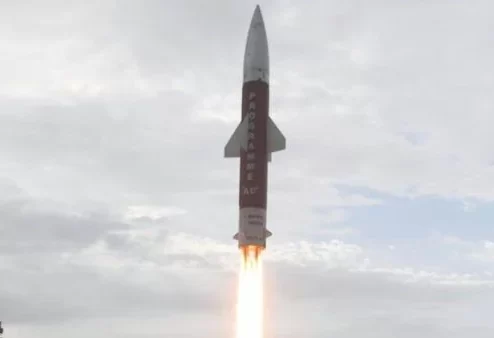The Defence Research and Development Organisation (DRDO) successfully flight-tested the second phase of India’s ballistic missile defence system off the coast of Odisha on Wednesday, thwarting threats from missiles with a 5,000 km range, according to the defence ministry.
“The target missile was launched from LC-IV Dharma (a launch site in Odisha) at 1620 hrs, mimicking (an) adversary ballistic missile, which was detected by weapon system radars deployed on land and sea, and activated the interceptor system,” it said in a statement.
India is pursuing its ballistic missile defence programme in two phases: the first has been completed, and the second is under ongoing to validate intercept systems in a new range category.
“The phase-II ‘AD endo-atmospheric missile’ was launched from LC-III at ITR, Chandipur at 1624 hrs. The flight test fully met all the trial objectives,” it said, adding that the test demonstrated indigenous capability to defend against ballistic missiles of 5000-km class.
The missile’s performance was monitored using flight data collected by range tracking sensors.
Defence Minister Rajnath Singh congratulated DRDO on the successful flight test, saying it once again confirmed India’s ballistic missile defense capability.
In April 2023, DRDO and the Indian Navy conducted the first flight test of a sea-based endo-atmospheric interceptor missile off the coast of Odisha, demonstrating the country’s navy ballistic missile defence capabilities to intercept long-range missiles.
India has made substantial progress in developing endo-atmospheric and exo-atmospheric intercept systems for destroying incoming hostile missiles within and outside of the atmosphere, respectively. The two systems have been merged to provide a multi-layered defence against ballistic missiles.
In November 2022, the DRDO successfully tested a long-range interceptor missile known as AD-1, which is designed for both exo-atmospheric and endo-atmospheric ballistic missile interception.
Source:HT








 Finance
Finance






